About
Hello and welcome!
I’m Gillian, Women’s Health Fitness & Wellbeing Specialist, Corrective Exercise Specialist, mum of twins, lifelong fitness and sports enthusiast.
Here at New Leaf, I take a wholistic, effective approach to fitness and wellbeing in all programs, classes, and 1:1 sessions. I know that by combining appropriate, interesting and engaging exercise with realistic and sound nutritional advice and self care strategies, you can achieve the results you desire.
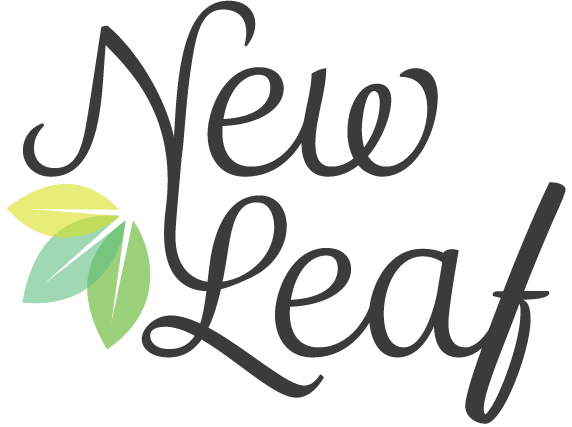
Those results may include:
- Keeping moving and comfortable throughout your pregnancy and preparing for birthing and early recovery.
- Properly regaining your core and pelvic floor function and strength after childbirth, no matter how many weeks, months or years ago that may have been.
- Making a safe, full return to exercise following the birth of your children, whether to fit into pre-baby clothes, to be able to run and play with your children, for fun, fitness, health, or all of these.
- Discovering effective fitness and wellbeing strategies during peri-post menopause, to ensure this phase of your life becomes a positive, powerful, and life-affirming experience.
- Learning to use your core properly for effective strengthening as part of your back rehabilitation.
- Protecting your pelvic floor post-gynaecological surgery so that you reduce the likelihood of needing a repeat surgery (which is, unfortunately, very common).
- Simply moving the way you like to move, to keep you feeling fantastic!
Take a look around the website to see what is on offer that suits you at this time in your life.
Warm regards,
Gillian Powell
BSc. (Hons.), Personal Trainer, Corrective Exercise Specialist
Founder of New Leaf Fitness and Wellbeing
Who Works With Me?
Women from all phases of life work with me, from pregnancy and birth preparation through post natal recovery and return to fitness, later post natal (once post natal, always post natal!), and during peri-post menopause and beyond. I am qualified to prescribe exercise for women who have had a hysterectomy, and for those who have had or are undergoing breast cancer treatment and/or surgery.
Further, I develop specialty programs for people referred to me for rehabilitation, including back/deep core stability and strengthening.
As a Strength and Conditioning Coach, I have worked with female and male youth and adult athletes (AFL, cricket, running and swimming), providing specialised programs for each individual, squad or team. This always has deep core awareness, connection and strength as the starting point, upon which all movements have their strong foundation. In this way, athletes can make significant gains in performance and reduce their likelihood of injury.
View Gillians Qualifications
- BSc. (Honours, First Class Honours), specialising in Anatomy and Physiology
- Cert III and IV in Fitness
- Level 2 Fitness Professional with Fitness Australia with additional knowledge and skills in:
- Anatomy, Physiology and
- Biomechanics
- Injury Prevention
- Rehabilitation Support
- Musculoskeletal Conditions
- Older Adults Exercise
- Core Strength and Stability
- Pelvic Floor
- Pregnancy and Post Natal Corrective Exercise Specialist
- Women’s Health Specialties
- Certification in Modern Pregnancy Exercise- Integrated Core and Functional Training
- Certification in Modern Post Natal Assessment and Exercise Prescription
- Certification in Third Age (Peri-Post Menopause) Holistic Fitness and Wellbeing, with additional education in:
- Breast Cancer Survivorship and Mental Wellbeing
- Optimal Health After Hysterectomy
- Certification in training women, taking them from Deep Core Dysfunction to Running a Marathon
- Accredited Athletics Australia Level 2 Intermediate Recreational Running Coach
- Accredited Strength and Conditioning Coach Level 1 with the Australian Strength and Conditioning Association Inc.

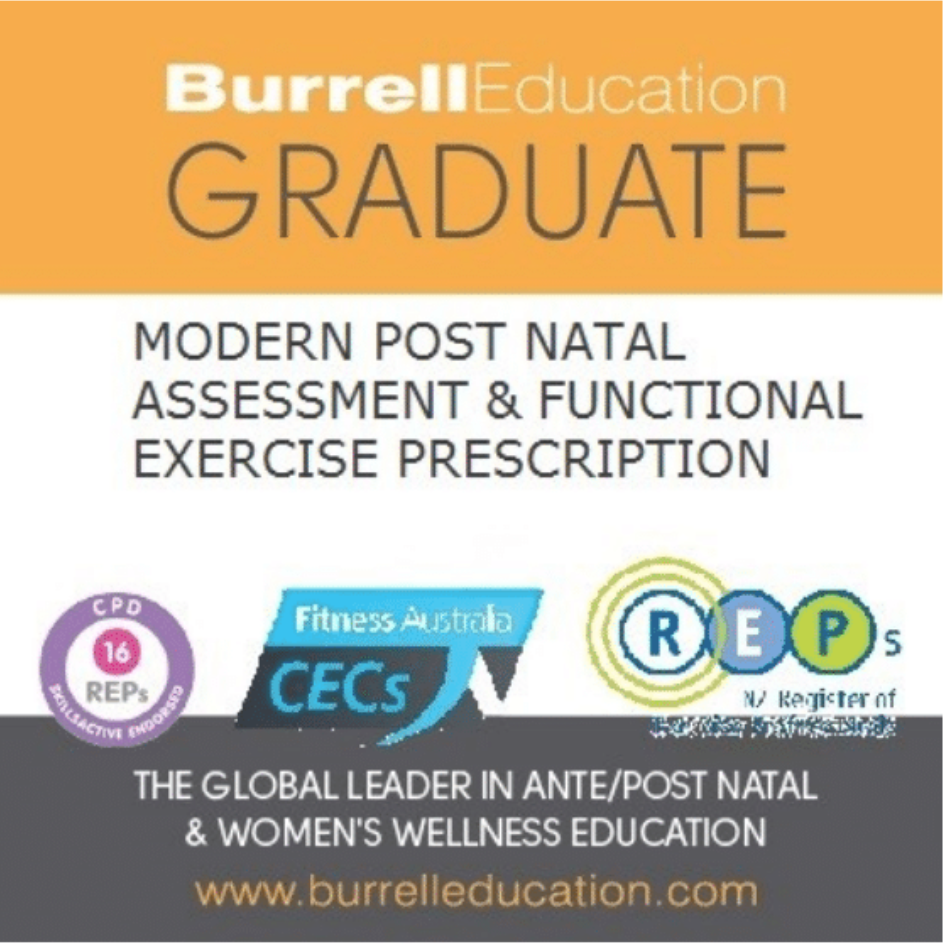
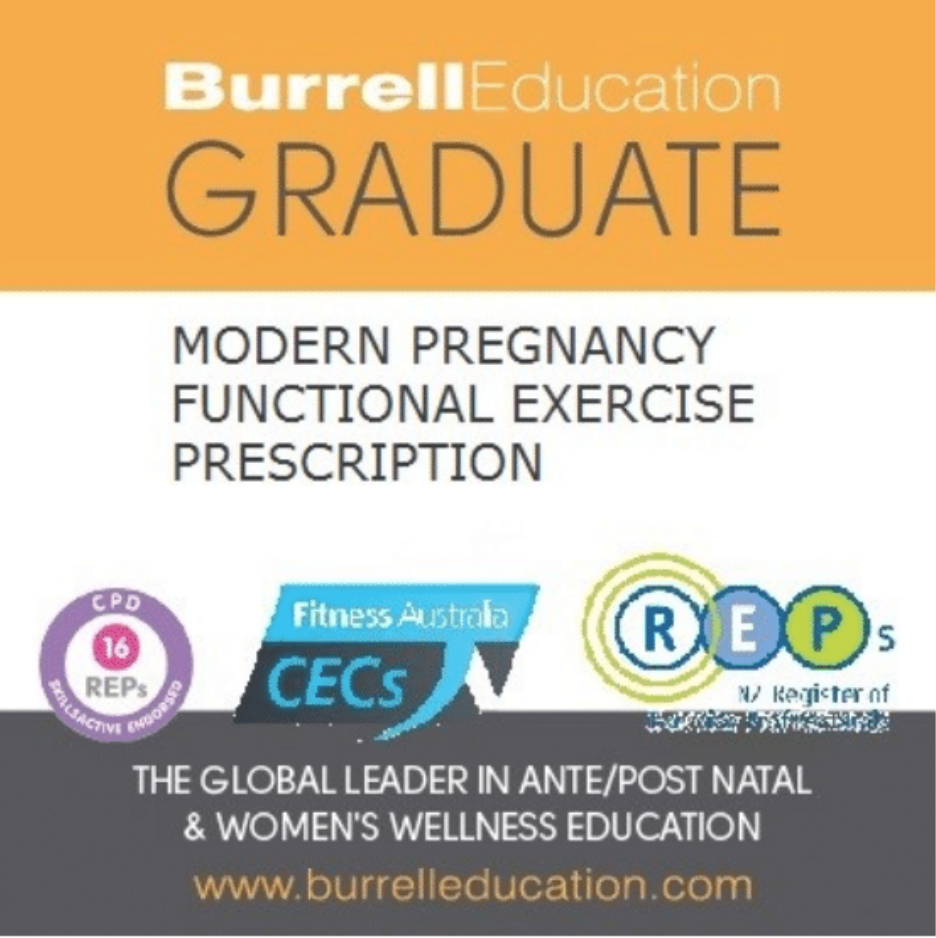
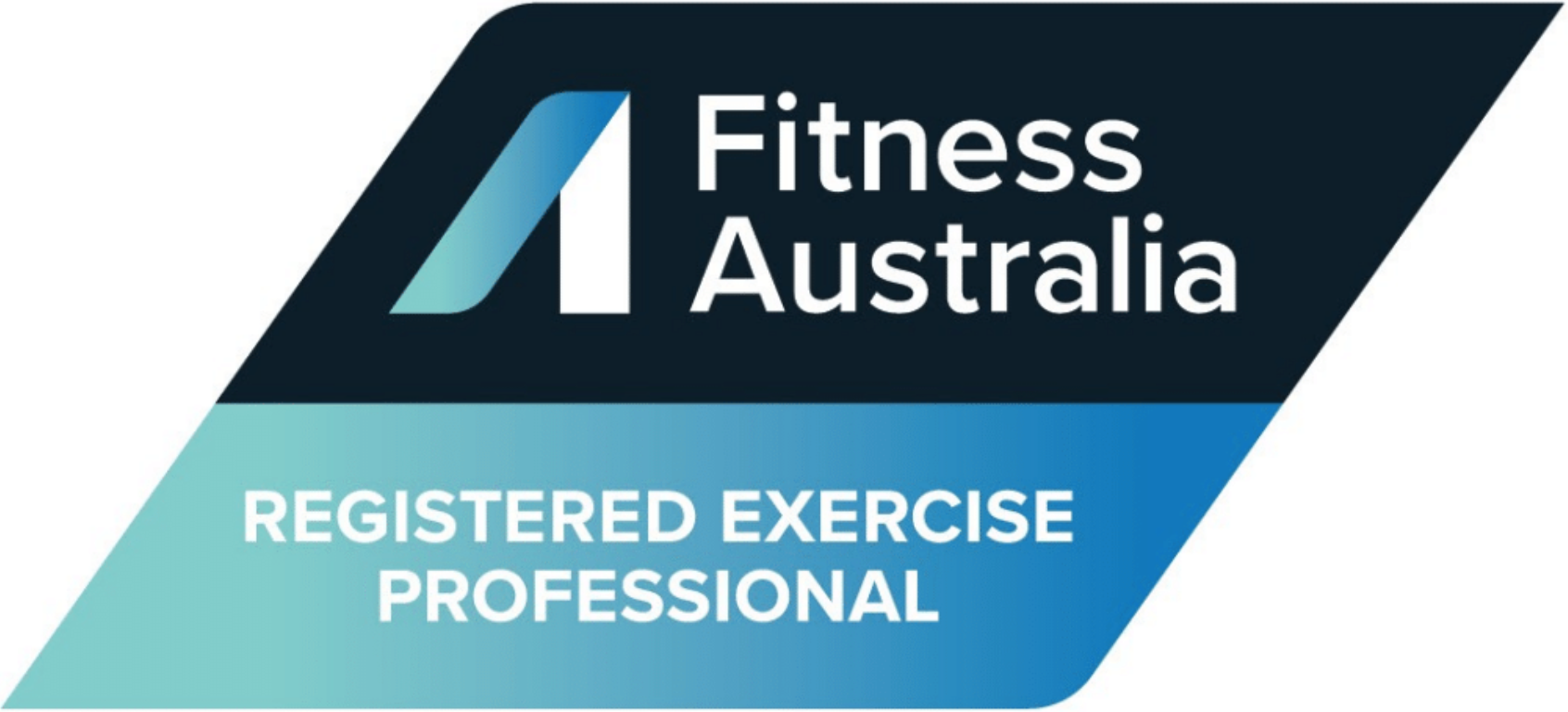
Why I Do What I Do
A short time following the birth of my boys, I was given the “all clear” by my doctor. However, in hindsight, I sure could have used some medical guidance, support and help.
I had chronic back pain for many months. I didn’t feel “right” down there. But no doctor at any point in the years to come said that anything was not as it should be. So I thought it was how I was supposed to feel after having a baby.
I started doing a lot of walking with the pram to save my mental health (twins!). Over time this got me back into good shape (it was really a lot of walking!), my back pain decreased, and I continued to be oblivious of my pelvic floor issues. Everything was seemingly fine with my core and floor…
…until…
I started having hormone fluctuations in my mid-30s. At this point I actually didn’t yet know that I was in peri menopause. It can be sneaky that way. I started having incontinence issues, and very easily injured my shoulders, knees and hips. My mental health and cognitive function deteriorated. Despite seeking help on multiple occasions, no medical professional ever offered advice or help for any of my issues. I really thought that my life as a vital person was over.
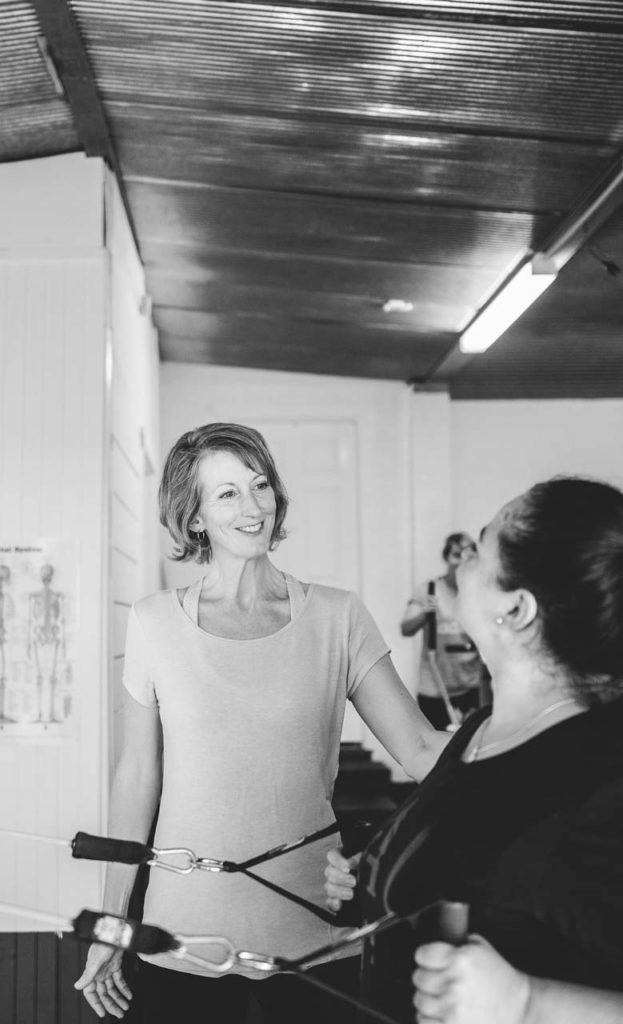 Fast forwards a couple of years, and I’d left science to become a fitness professional. At this point, during my specialist training, I was introduced for the first time to the breath-core connection and its vital importance in ensuring strength of movement and function in the rest of the body. At first I was sceptical. Having a science background, scepticism is my base-line state. Surely, I thought, I know how to breath. Surely automatic functions of the body like that of the breath-core connection can’t be lost. But my mind was soon changed.
Fast forwards a couple of years, and I’d left science to become a fitness professional. At this point, during my specialist training, I was introduced for the first time to the breath-core connection and its vital importance in ensuring strength of movement and function in the rest of the body. At first I was sceptical. Having a science background, scepticism is my base-line state. Surely, I thought, I know how to breath. Surely automatic functions of the body like that of the breath-core connection can’t be lost. But my mind was soon changed.
Applying the strategies I learned, to my movements in fitness and daily life, has not only improved the strength of my movements and improved my pelvic floor issues- It has drastically improved my lifelong lower back stability and pain.
Then, in late 2017 I was diagnosed with thyroid cancer and had surgery to remove my thyroid, followed by treatment. It was a tough experience to go through, but it gave me exactly that: experience. I was able to apply to myself all that I had learned in my rehabilitation education, in addition to my specialised training for women with breast cancer. Even though my operation was smaller than that which many breast cancer patients would experience, I still felt pulled down by my scar, like I couldn’t stand up in good posture properly. In addition to specific exercises and muscle releases, scar massage, and relaxation, I ate as healthful as possible.
Now I am full of energy and move stronger and more comfortably than ever before! And I have found my passion in creating a community of women from all stages of life. These are women who want to empower themselves, by learning skills and strategies that will help them stay strong, fit and balanced, no matter what life may throw at them.
If this sounds like something you’ve been looking for, sign up for a class or course!
Why “Breathe, Move, Learn, Flourish”?
Breathe. Move. Learn. Flourish. Is the ethos behind New Leaf Fitness and Wellbeing because each has special significance, and they are incredibly powerful when used together.
Breathe
If we do not start by correcting flawed breathing patterns that invariably put pressure on other parts of the core and decrease their ability to function, any improvements made will only be minor and temporary, leaving us susceptible to future injury and dysfunction.
Move
Movement is vital to our health and wellbeing. It allows the full function of all the systems of our body. It helps us stay healthy both mentally and physically. Movement of the entire body is intimately linked to the deep core; without full core function, proper and strong movement in the rest of the body is compromised. Inversely, movement can stimulate/activate/strengthen the response of the deep core, leading to improvement of function when activated in the correct (natural, the way it is meant to happen) sequence. We must re-link function of the deep core to the automatic function of the breath, add in small movement, integrate this into movements of daily life (taking care of children, house and garden work, standing up and sitting down, getting out of bed, etc.), and then into more rigorous movements such as jumping on a trampoline or running after your children. And eventually, you will be able to return to favourite activities: Taking part in a fitness class. Running for exercise and stress relief. Playing tennis (think of running and stretching out to hit a return, stretching into a deep lunge and maintaining control of your entire core/pelvic floor). Netball. Footy. Cross-fitting (control of core/pelvic floor during repeated lifting of a heavy load, intense jumps). Any activity you would like to engage in whilst maintaining control over your core/pelvic floor and having them fully support and enhance your movements.
Learn
Learning is the basis for understanding. Once you understand why something is important, and how it fits in the big picture of attaining your goals, you will want to incorporate it into your lifestyle. You will more likely be able to:
- Maintain an improved quality of life.
- Have a return to fitness or sporting activities that you currently don’t engage in due to lack of pelvic floor/core function, pain, or lack of physical fitness.
- Have success in regaining control of your pelvic floor function.
- Improve your diastasis recti and regain functional control of your abdominal wall.
- Protect your back from pain and injury caused by lack of core function.
- Harness the powers of nutrition, stress reduction, proper sleep hygiene, soft tissue work, and effective movement and exercise.
Flourish
Facts about the Deep Core
The “deep core” is made of of multiple components that work together in a specific sequence to breathe, regulate abdominal pressure, allow proper function of the pelvic floor, provide an inner support for the abdomen, and provide activation and stability of the lower back.
Maintaining a healthy pelvic floor and good bladder and bowel function, or managing pelvic floor dysfunction with a conservative strategy (as opposed to surgery) is considered preventive medicine and should be the first line of treatment for most people.
Women can learn how to maintain a healthy pelvic floor and core, or to better manage many of the cases of deep core/pelvic floor dysfunction.
Deep core dysfunction can occur:
- from a lack of movement or physical activity (sitting lots).
- during/after pregnancy.
- due to trauma sustained in childbirth (vaginal or C-Section delivery).
- from participating in sports/activities that require repeated high impact or body blows (gymnastics, running, netball, martial arts, etc.).
- at any age.
- due to a chronic cough or sneeze.
- with chronic constipation.
- from being overweight.
- upon entering peri menopause during which connective tissue quality starts to decline.
- with later ageing.
If there is dysfunction of the sequencing of core activation for any of the components, due to tissue damage, pain, improper neural patterning, or poor posture, the result can be pelvic floor dysfunction (including urinary and faecal incontinence, vaginal or rectal prolapse, bowel movement difficulties, pelvic pain), lack of diastasis control in form or function, back pain and injury, hernia.
Maintaining (it is natural when we are young but lost for many reasons including those listed above) or regaining proper core sequencing, and then applying it during all movements of daily life, as well as during exercise, is key to protecting your pelvic floor, your spine and the rest of your core. It is also what gives strength to movement in other parts of your body.
Australia people over 15yrs were personally affected by incontinence (at time of survey)
%
of people affected by incontinence are women 15yrs+
%
of women who have had children will have a pelvic floor prolapse in their lifetime
Prevalence of Pelvic Floor Dysfunction
The Continence Foundation of Australia commissioned a report that showed that, in Australia alone, 4.8 million men, women and children over 15 years of age were personally affected by incontinence at that time.
79% of those affected were women
50% of women who have had children will have a pelvic floor prolapse in their lifetime, which is borne out by research
- conservative measures to help prevent or slow worsening of prolapse must be followed for life, otherwise the potential need for repair surgery increases
- in some cases, prolapse is too severe to be managed by conservative treatment and surgery is required
- please note that surgery is not a handy quick fix and shouldn’t be considered until absolutely necessary. There is a relatively high incidence of surgical failure and surgery must then be repeated.
Many elderly people are placed in aged care because of urinary and faecal incontinence. These issues are highly prevalent in this population, as maintaining or returning function to the deep core has not been properly addressed, if at all, earlier on in life in most cases. They have not, when they were young/er, been made aware of how to use their deep core to avoid or slow developing pelvic floor dysfunction.
More facts compiled on the Continence Foundation of Australia website can be found here
How about Diastasis?
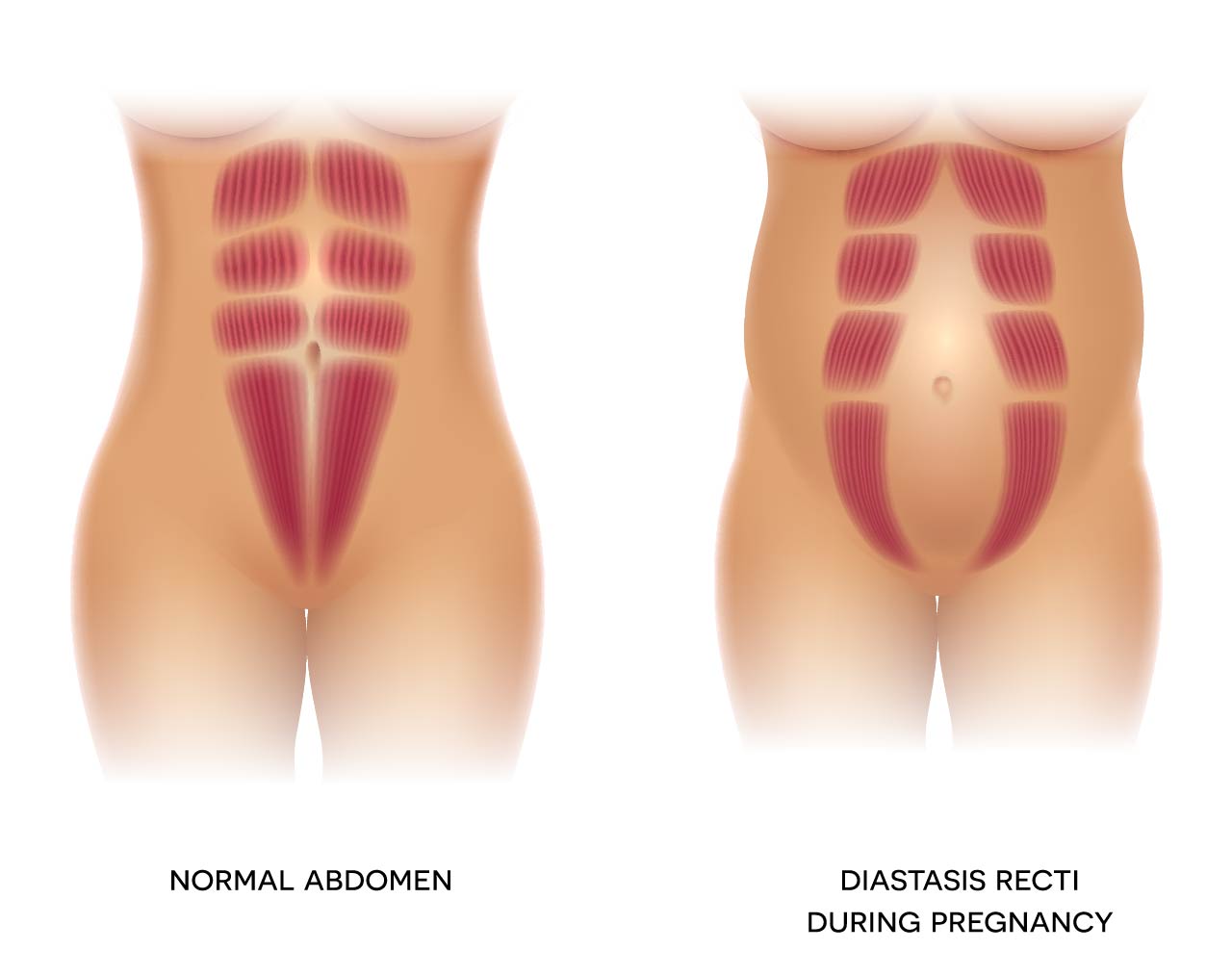
Research now shows that 100% of women in the third trimester of pregnancy develop a gap between the two bellies of the rectus abdominus muscle to make room for the growing fetus.
In a study by Coldron et al (2008), it was concluded that inter-recti distance decreased markedly by 8 weeks, but if not “closed” by then, did not reduce further without intervention through physiotherapy or an exercise training program.
Closure of the diastasis is no longer considered the goal or gold standard as it does not mean that you will function properly, so please don’t stress about that! Rather, creating a return to function of the entire deep core (pelvic floor, breathing muscles, deep abdominals, deep back stabilizers) through proper breath-core sequencing and applying this ability to all movement is essential to maintaining or improving pelvic floor function, and protecting your back lifelong.